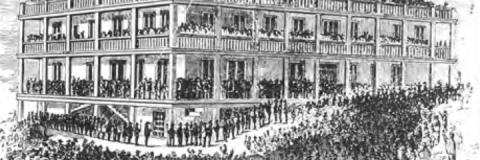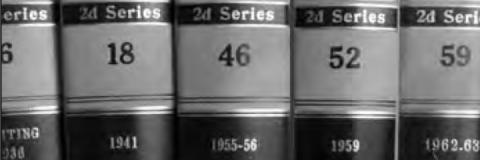History of the Supreme Court
A Brief Visual Timeline
Explore the history and growth of the Court from 1849 to today.
-
The Court is Established as Part of the California Constitution
In September 1849, 48 delegates assembled at Colton Hall in Monterey to draft the state’s first Constitution, which was completed in six weeks. Article VI of the new Constitution, covering the judicial branch, provided for a Supreme Court consisting of a Chief Justice and two associate justices.
-
California Joins the Union and the Court’s First Convening
On March 4, 1850, the court convened for the first time in the Graham House, a former hotel on the northeast corner of Kearny Street and Pacific Avenue. It was housed there when California officially joined the Union in September 1850.
Image
-
The Court’s Structure and Scope is Expanded
The California judiciary was reorganized in 1862 to meet the needs of a growing state. Article VI of the California Constitution was amended to expand the categories of cases the court could hear and to increase the number of Supreme Court justices from three to five. Terms of office were increased from 6 to 10 years.
-
As California Grows, So Does the Court, Again
The Supreme Court had been expanded again. It was now to consist of a Chief Justice and six associate justices, and terms of office were increased from 10 to 12 years. The categories of cases that The Supreme Court of California the court was authorized to hear were once again augmented, and all opinions were required to be in writing.
Image
-
Courts of Appeal Are Established as the Court’s Mandate Evolves
In 1904, three Courts of Appeal were created and the commissioners were eliminated. The new courts were to handle all appeals in the “ordinary current of cases,” leaving appeals in the “great and important” cases to the Supreme Court.
-
The Judicial Council of California is Established
A 1926 amendment to article VI of the Constitution established the Judicial Council of California, chaired by the Chief Justice. The Council’s mandate is to improve the administration of justice and to enact rules of court practice and procedure. The following year, another constitutional amendment created the State Bar, a public corporation to which all attorneys practicing in California must belong.
Image
-
Appointment and Election Processes Are Reorganized
In 1934 uncontested judicial elections were adopted for the appellate courts, including the Supreme Court. Under this system, the Governor, subject to confirmation by the Commission on Judicial Appointments, fills vacancies in the appellate courts by appointment. At the next general election, voters decide whether the appointees should be confirmed to fill their predecessors’ unexpired terms and whether justices whose terms will expire should be elected to new full terms.
-
The People Vote to Unify the County / Superior Courts
In 1998 the California voters amended the Constitution to allow each county’s trial judges to unify their courts into a single countywide Superior Court system. Until then, separate municipal courts in each county had handled the less serious matters, such as misdemeanors, infractions, and minor civil cases. All 58 counties subsequently consolidated their municipal courts with their respective Superior Courts. Through all this change, the Supreme Court continues to hear cases that make their way from these Superior (or "trial") courts via the six Courts of Appeal.